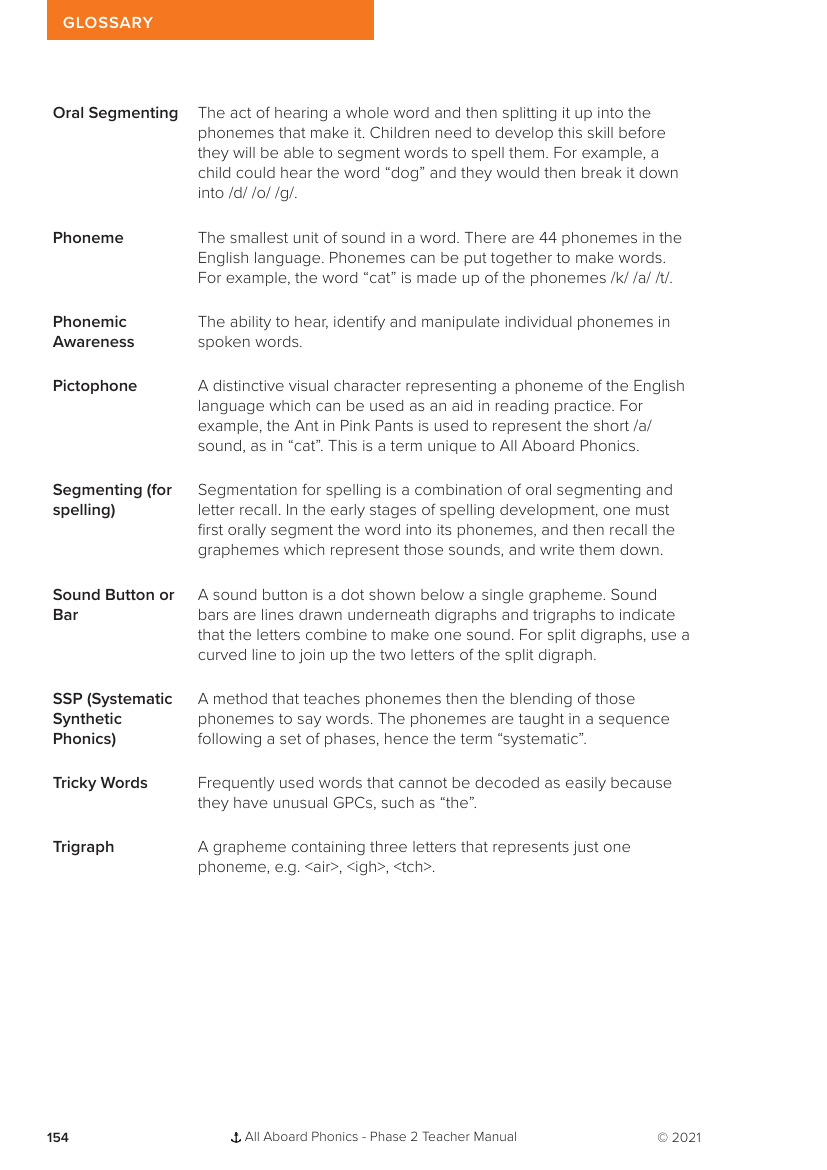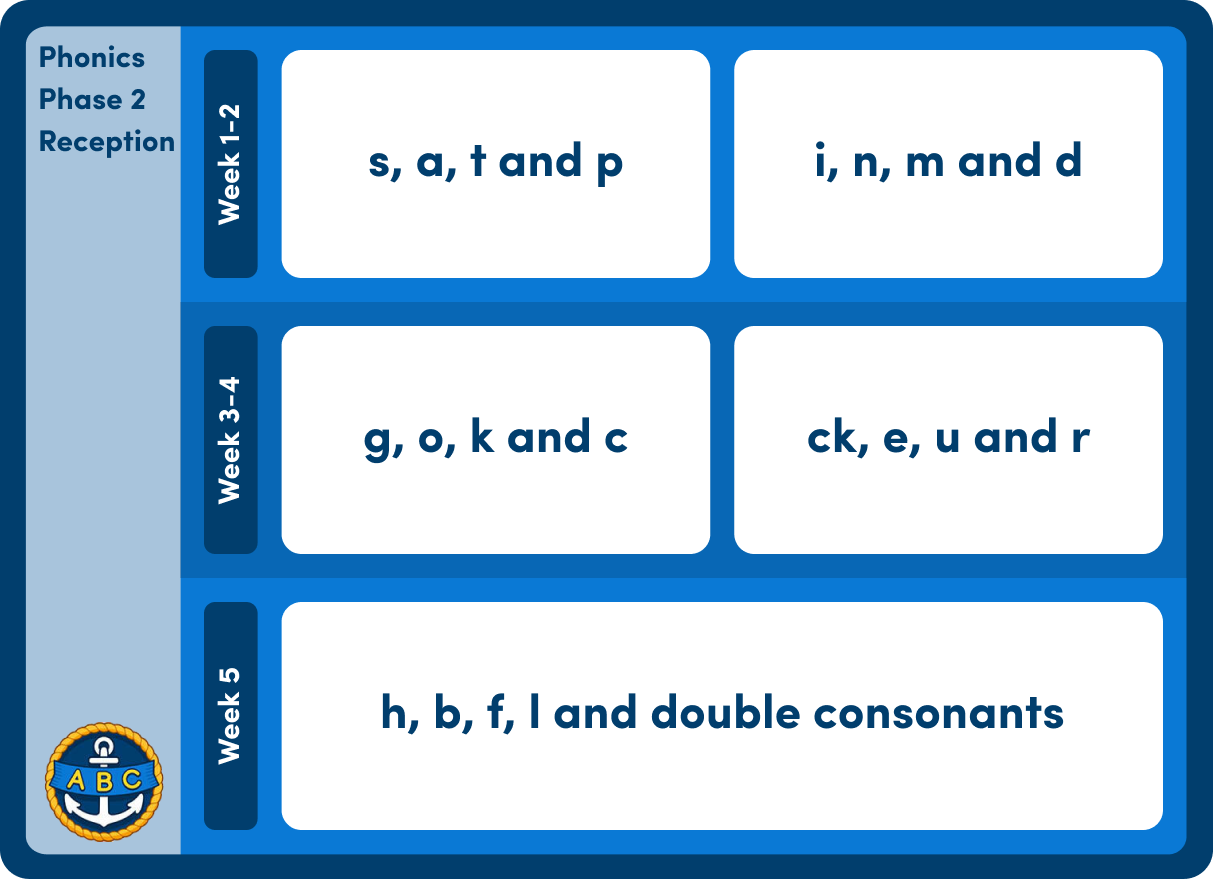Glossary - Phonics Phase 2 - Resource

English Resource Description
The 'All Aboard Phonics - Phase 2 Teacher Manual' includes a glossary of terms that are essential for understanding the basics of phonics education. 'Oral Segmenting' refers to the skill of listening to a whole word and breaking it down into its individual phonemes, which is a critical step before children can segment words for spelling. For instance, the word "dog" can be segmented into the phonemes /d/ /o/ /g/. A 'Phoneme' is the smallest sound unit in a word, and the English language comprises 44 distinct phonemes that combine to form words, like /k/ /a/ /t/ to make "cat".
'Phonemic Awareness' is the ability to hear, identify, and manipulate phonemes within spoken words. The term 'Pictophone' is unique to All Aboard Phonics and refers to a visual symbol that represents a phoneme, aiding in reading practice, such as an image of an Ant in Pink Pants representing the short /a/ sound. 'Segmenting for spelling' is a process that involves oral segmenting followed by recalling and writing down the corresponding graphemes. A 'Sound Button or Bar' is a visual cue used to indicate single graphemes or combinations of letters that form one sound in digraphs and trigraphs, with a curved line for split digraphs. 'SSP (Systematic Synthetic Phonics)' is a structured method teaching phonemes in a specific order and then blending them to form words. Lastly, 'Tricky Words' are those frequently used but hard to decode due to unusual grapheme-phoneme correspondences (GPCs), and a 'Trigraph' is a three-letter grapheme that represents a single phoneme.

